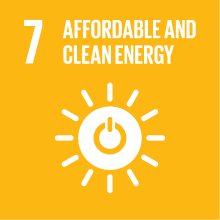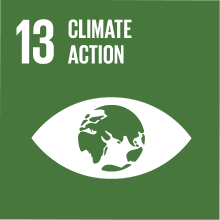GENERAL PHYSICS 1
- Academic year
- 2021/2022 Syllabus of previous years
- Official course title
- FISICA GENERALE 1
- Course code
- CT0523 (AF:355304 AR:187944)
- Teaching language
- Italian
- Modality
- On campus classes
- ECTS credits
- 9
- Degree level
- Bachelor's Degree Programme
- Academic Discipline
- FIS/01
- Period
- 2nd Semester
- Course year
- 1
- Moodle
- Go to Moodle page
Contribution of the course to the overall degree programme goals
The educational objectives of the course are:
1) Developing the ability to solve problems of classical mechanics (kinematics, statics, dynamics) by applying the main laws;
2) Favoring and stimulating the use of a logical and deductive thinking in the resolution of these problems (an approach of fundamental importance to face any problem in the scientific field);
3) Developing the ability to present scientific concepts in a formal way, both orally and in writing;
4) Developing dexterity and autonomy while dealing with simple experimental problems, either alone or in small work groups;
5) Favoring an appropriate experimental approach to scientific research and the use of instruments for measuring things;
6) Knowing how to treat and interpret the collected experimental data, as well as to report them in a contextual scientific language.
Expected learning outcomes
a) Knowing the main laws and the main concepts of classical physics concerning kinematics, statics and dynamics.
b) Knowing the main features of the process of acquisition and processing of experimental data.
2. Applying knowledge and understanding:
a) Knowing how to use the laws and the physical concepts learned to solve theoretical and practical problems in a logical and deductive way.
b) Knowing how to create a collection of experimental data (alone and in group) and a consequent elaboration that is consistent in the final results, to be prepared by writing a scientific report.
3. Making judgements:
a) Being able to evaluate the logical consistency of the results to which the application of the learned physical laws is applied, both in the theoretical field and in the case of experimental data.
b) Knowing how to recognize errors through a critical analysis of the applied method.
4. Communication:
a) Knowing how to communicate the knowledge learned and the result of its application using appropriate terminology, both in oral and written form.
b) Knowing how to interact with the teacher and with the classmates in a respectful and constructive way, especially during the experimental work carried out in a group.
5. Lifelong learning skills:
a) Knowing how to take notes, selecting and collecting information according to their importance and priority.
b) Being able to be sufficiently autonomous in the collection of experimental data.
Pre-requirements
Contents
INTRODUCTION
- Introduction to the course.
- International System of Units.
KINEMATICS OF A POINT PARTICLE
- Linear motion.
- Velocity and acceleration. Uniform linear motion and uniformly accelerated linear motion.
- Vertical motion, harmonic motion and damped motion.
- Motion in a plane.
- Circular motion and parabolic motion.
DYNAMICS OF A POINT PARTICLE
- Newton's laws.
- Momentum and impulse.
- Net force, equilibrium and constraint reactions.
- Forces: classifications and examples.
- The pendulum.
- Work, power and kinetic energy.
- Work of a force, potential energy.
- Conservation of energy.
- Angular momentum and momentum of a force.
RELATIVE MOTIONS
- Reference frames.
- Relativity.
DYNAMICS OF SYSTEMS WITH MORE POINT PARTICLES
- System of particles, centre of mass.
- Momentum conservation.
- Theorem of angular momentum and conservation.
- König's theorems.
- Theorem of the kinetic energy.
DYNAMICS AND STATICS OF THE RIGID BODY
- Definition of rigid body and motion.
- Rotation and moment of inertia.
- Huygens-Steiner's theorem.
- Rolling.
- Laws of conservation.
COLLISIONS
- Elastic and inelastic collisions.
FLUID MECHANICS
- Generalities on fluids.
- Equilibrium.
- Archimedes' principle.
- Motion of a fluid and mass flow rate.
- Bernoulli's principle and applications.
GRAVITATION
- Gravitational force and other hints on the topic.
-------------------------------------------------------------------
SECOND PART:
THEORY OF ERRORS
- Inevitability of errors and importance of their evaluation.
- Systematic and random errors.
- Estimation of random errors and their representation.
- Digits, absolute and relative errors.
- Errors in arbitrary functions of one or more variables and their propagation.
- Mean value, standard deviation and standard deviation of the mean.
- Histograms, distributions and confidence intervals.
- Methods of regression.
LABORATORY OF GENERAL PHYSICS 1
- Repeated measurements of the period of a Kater pendulum: Gaussian distribution of random errors.
- Measurements of rotational dynamics of a flywheel: determination of the moment of inertia.
Referral texts
- Warmly suggested: P. MAZZOLDI, M. NIGRO, C. VOCI: "Fisica, Volume I", EdiSES, Napoli.
- Optional: R. FEYNMAN, R. B. LEIGHTON, M. SANDS: "The Feynman Lectures on Physics - Volume I: Mainly Mechanics, Radiation and Heat", Basic Books, New York.
SECOND PART
- M. LORETI: "Teoria degli Errori e Fondamenti di Statistica, Edizioni Decibel-Zanichelli 1998 (freely available at the following website: http://wwwcdf.pd.infn.it/labo/INDEX.html ).
- Optional: J. R. TAYLOR: "Introduzione all'analisi degli errori. Lo studio delle incertezze nelle misure fisiche", Zanichelli, Bologna.
Assessment methods
The written test consists of a series of exercises, related to the first part of the program reported in the "Contents" section, to be solved numerically, justifying the methods used for the solution. This test aims to verify that the students have acquired the concepts presented during the lessons and know how to apply them with consistency in order to solve problems. The written exam can be substituted by passing two intermediate written tests, scheduled one towards the middle and the other at the end of the course. The duration of the written test is two hours (one hour each, in the case of the two intermediate tests). During each written test only the use of a scientific calculator is allowed: it is therefore not allowed to use notes, books, electronic supports, ...
The oral exam consists of a series of questions concerning both parts of the program reported in the "Contents" section: the students must in this way demonstrate both the learning of the topics taught in class and the ability to expose them in a formal manner. The oral exam lasts about 30 minutes and must be positively sustained within one month after the end of the exam in which the written test was passed, on a date to be agreed with the teacher. The mark obtained in the oral test will integrate be integrated with the written test score.
The laboratory test is subject to mandatory participation in both laboratory experiences. It consists in the drafting of a scientific report concerning the experimental measurements made in the laboratory, which must report the description of the experimental approach adopted, the processing of the collected data, the final result (including uncertainty) of the measured physical quantity. In this way one evaluates the students' ability to deal with experimental and practical problems, to correctly process a set of experimental data, to report his/her work in writing in a formal manner. The report is evaluated with a grade between -3 and +3, which will be added to the final grade of the other two tests (written and oral). The report must be delivered at the latest a few days before the oral exam.
Type of exam
Teaching methods
a) Lectures, including solving of exercises;
b) Two laboratory experiences in which the students, working in groups, carry out the collection of experimental data and data processing. For both laboratory experiences there is a compulsory attendance. Failing to attend the two experiences would result in the student not passing the relative part of the exam.
In the "Moodle" platform of the University it will be possible to find teaching material.
Further information
Accommodation and support services for students with disabilities and students with specific learning impairments:
Ca’ Foscari abides by Italian Law (Law 17/1999; Law 170/2010) regarding support services and accommodation available to students with disabilities. This includes students with mobility, visual, hearing and other disabilities (Law 17/1999), and specific learning impairments (Law 170/2010). In the case of disability or impairment that requires accommodations (i.e., alternate testing, readers, note takers or interpreters) please contact the Disability and Accessibility Offices in Student Services: disabilita@unive.it
2030 Agenda for Sustainable Development Goals
This subject deals with topics related to the macro-area "Climate change and energy" and contributes to the achievement of one or more goals of U. N. Agenda for Sustainable Development


